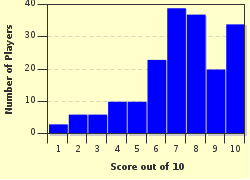Quiz Answer Key and Fun Facts
1. Who is known as the "Oracle of Omaha"?
2. What two statistics are used for a P/E ratio?
3. Which of these asset classes is generally viewed as the most risky?
4. Microsoft has which nickname on Wall Street?
5. Which is not a U.S. listed stock exchange or index?
6. What is a common way to analyze a stock or company?
7. Which of the following is not a good source of information on a company's health?
8. Which statement best describes a cyclical company?
9. What term has been coined for the recession of 2007-2009?
10. The Laffer Curve is considered which of the following?
Source: Author
cfrancois
This quiz was reviewed by FunTrivia editor
stedman before going online.
Any errors found in FunTrivia content are routinely corrected through our feedback system.


